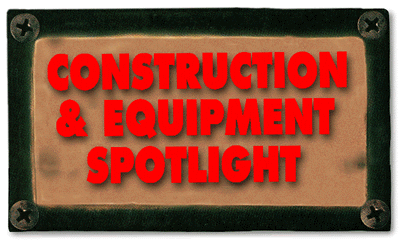|
| |
 April 24, 1997 |
|
| |
 April 24, 1997 |
Using cranes will speed up bridge project
By ROBERT DOWNEY It is common to see fisher folk casting their lines out along the Green River. With a strong cast, one can get tangled on the opposite bank when spanning the river with line. That is the principle behind the placement of the new South 277th Street Pedestrian Bridge spanning the Green River in Kent. When the bridge is built a 250-ton crane will "cast" the 160,000-pound, 172-foot-long steel bridge over the water to be caught and set in place using a second 250-ton crane on the other side. A relatively short construction schedule of 180 days, an environmentally sensitive site, and the dependence of other projects on completion of the bridge, prompted DBM/CM to propose building the bridge on land and lifting it into place rather than constructing it over water. The decision, based on both a cost savings and environmental safety, is proving to be wise. With the intense rain this spring a temporary bridge support mid-stream would likely have washed out, causing both environmental damage and costly delays. As it is, construction is within budget and on schedule and should be completed in fewer than the 180-day contract period. Initial work at the site had to be scheduled between intense storms. Site preparation included building two piers that the bridge will be set on while maintaining as much of the river bank and vegetation as possible. This was done by using a silt fence and bank protection to prevent erosion and by doing minimal clearing and grubbing. Simultaneously, steel for the bridge was being fabricated (and painted) in Kent and will be trucked to the site. On the east side of the river, well above the stream bed, the 155 pieces, including the steel tube truss with wide flanged floor beams and stringers, will be assembled. The bridge's side trusses will be built first and will be temporarily braced with cables as necessary. Once both trusses are built, the floor beams and stringers will be installed. To set the bridge in place, two 250-ton, hydraulic, mobile cranes from Sicklesteel Cranes will be used to hoist the bridge into place. Crane #1 will be positioned on the east side of the river and will begin the process of setting the bridge with a series of picks, rotating the bridge 90 degrees to align it longitudinally with the piers and its final position. When aligned, approximately 70 feet of the bridge will be cantilevered over the water. Crane #1 will then move into its final position to the north of pier #2 on the east side of the river. When in place, it will again pick the bridge and cast it out, swinging it toward pier #1 on the west side of the river. When the bridge is within 60 feet of the center pin of crane #2, (approximately 85 feet over the water) the second crane will begin to take the loading off the first crane. As the bridge is moved closer to the west side of the river, crane #2 will take more and more of the weight until it has half the weight of the bridge. While crane #2 is holding half the weight of the bridge, crane #1 will lower the east end of the bridge on temporary timbers, re-rig at the end point, and pick the bridge to lower it on the anchor bolts. Once in place, crane #2 will repeat this procedure on the west side. The picking and setting in place will take one to two days. Savings on the job range from labor and materials to equipment and insurance costs. Building the piers and assembling the bridge on site requires a minimum crew of two laborers plus four iron workers to assemble the bridge. The cranes used to set the bridge will be on site for a maximum of two days. If it were built over the water, it would require at least eight workers and a 70-ton crane on site fulltime for 30 days. Other savings include insurance costs, which would be much higher if the bridge were being built over the water, and a road closure of one as opposed to five days. In addition, the bridge will be used as a haul route across the Green River to move approximately 20,000 cubic yards of fill material across the river to complete the balance of the project. The actual pick and setting of the bridge is scheduled for May 4. Completion of the $500,000 project is scheduled for the end of May. Team members participating in the project include ABKJ, design engineers; Dawson Pile Driving, pile driving; Kaiser Steel Fabrications, steel fabricators; and Stoneway Concrete, concrete and aggregate. The project owner is the City of Kent. The pedestrian bridge is part of the City of Kent 277th Corridor project, a $27-million, five-lane arterial that will go from Auburn Way to Kent-Kangley Road. Robert Downey is a project engineer with Donald B. Murphy Contractors and Cooney-McHugh Division (DBM/CM).
 djc home | top | special issues index
Copyright © 1997 Seattle Daily Journal of Commerce. |